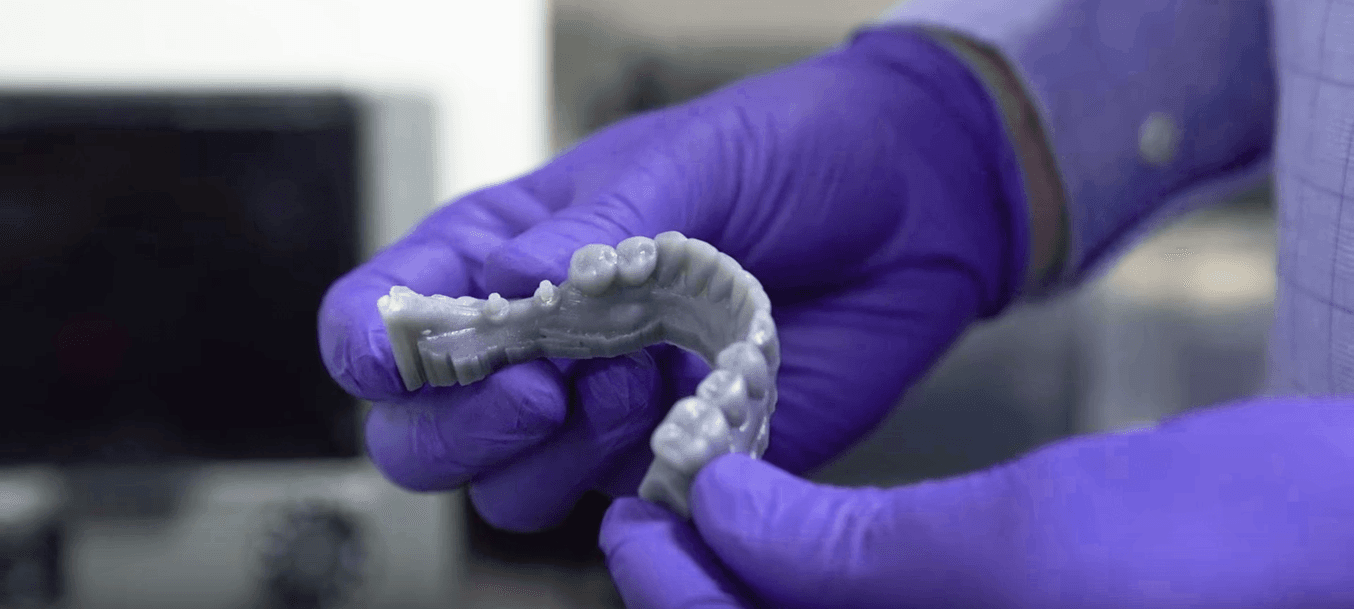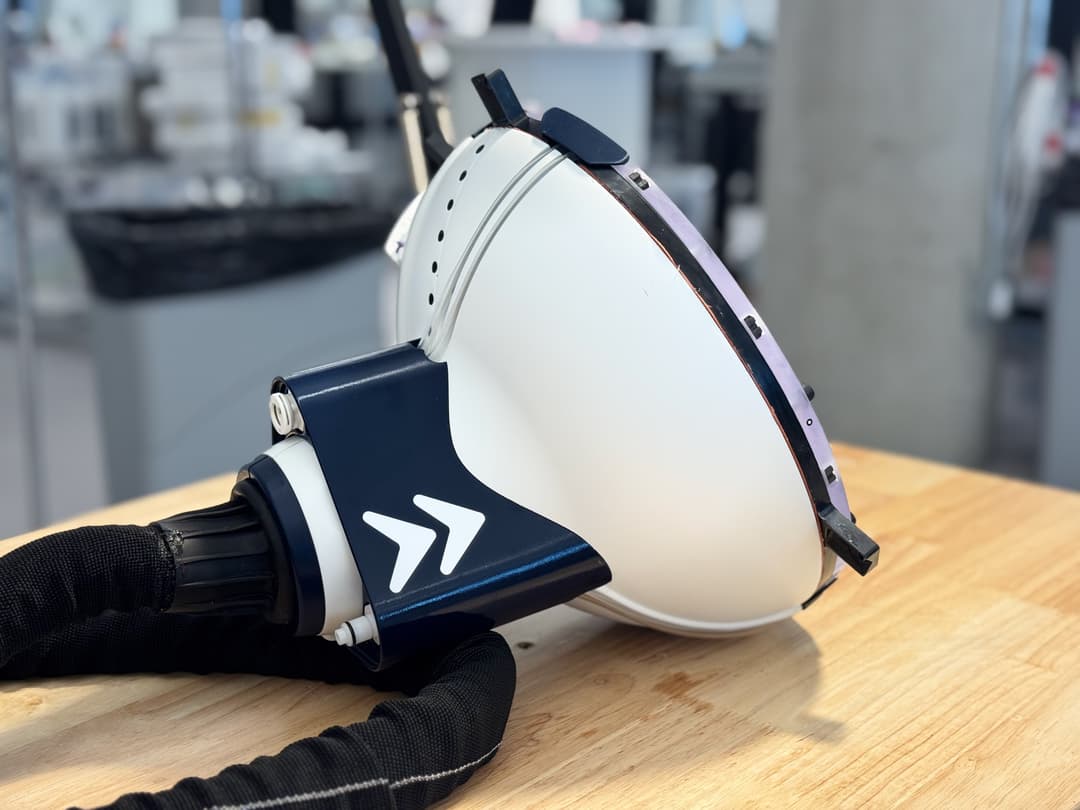
The next time you visit the doctor’s office, you might see a 3D printer. Doctors and researchers are using in-house 3D printing for everything from prototyping new products to designing custom surgical guides. This cutting-edge movement is improving patient care, helping doctors work more effectively, and supporting new research that’s pushing the boundaries of the medical field.
1. Custom Stents for the Perfect Fit

Tracheal stents, used to open the airway of patients who have trouble breathing, are not one size fits all. A traditional stent (left) is straight and can move around in the trachea, while custom 3D printed stents (middle and right) are designed for the individual patient’s body, greatly reducing complications. Dr. George Cheng creates tracheal stents by 3D printing a custom mold based on patient scan data and pouring silicon into it for the final model.
2. Mapping the Brain

Created in collaboration with Princeton’s Seung Lab, Eyewire is an online game that maps the brain. Anyone can play, and you don’t need a scientific background — over 200,000 people from 145 countries already do. Together they are mapping the 3D structure of neurons, advancing our quest to understand the human brain. Eyewire uses the Form 2 3D printer to explore the neurons as 3D models, providing a fuller understanding of their complex structure.
3. Medical Selfies

Curiosity could save your life. In 2007 Steven Keating volunteered for a study where he looked at spiders while researchers scanned his brain. He asked to see the raw data, and they noticed a small abnormality but told him not to worry. Seven years later, Steven experienced small micro-headaches and noticed a faint vinegar smell. Knowing that the abnormality had been near the part of the brain that processes smell, he immediately sought out an MRI scan. What he found was astonishing: a brain tumor the size of a baseball. The PhD student at MIT’s Mediated Matter group used 3D printing to visualize his tumor based on scan data and is now an advocate for open patient data. To hear the full story, watch Steven's TEDxYYC talk.
4. Prototyping New Medical Devices

Sutrue created an automatic suturing device that performs neat and repeatable stitches, reducing the chance of tissue damage. The functional prototype (above) was prototyped with a Formlabs 3D printers by engineer Alex Berry and consultant cardiac surgeon Richard Trimlet.
Download a case study to learn more about how medical device engineers use the Form 2 to accelerate product development by iterating complex designs in days instead of weeks, at a fraction of the cost of outsourcing or silicone molding.
5. Restoring Smiles

When you lose a tooth, you might turn to a dental implant to restore your smile. Traditionally, dentists would freehand drill to create the attachment point in your mouth. Today, they can perform path-planning ahead of time in 3D software and print a biocompatible drill guide for you to wear during surgery, making the whole procedure much faster and more accurate.
6. Veterinary Surgical Guides

Surgical guides aren’t just for human patients. Dustin Headley, an assistant professor at Kansas State University, collaborated with designers to assist in the surgical planning of veterinary medicine. These 3D prints of a dog lung with a tumor (left), a dog skull (middle), and an elbow with a rotated ulna (right) help surgeons plan and practice before complex procedures.
7. Fluidics for Synthetic Biology

Microfluidic chips were traditionally fabricated on flat 2D plates, but now researchers are exploring the frontier of 3D fluidic designs. The above millifluidic devices were created for Prototyping Microbial Communities, an MIT class by David Kong. The objective of the course is to recreate the microbial community of the human gut. Learn more about 3D printing millifluidics with researcher Dan Chen’s design tips.
8. Training the Next Generation of Pediatric Surgeons

Biomedical Modeling Inc. is one of the top medical modeling companies in the industry. In one case, they created a mold of an infant’s spinal cord and cast a silicone model (above). Pediatric neurosurgeons used the model to practice operating on spina bifida, a severe congenital defect.
Learn more about the impact of using patient-specific anatomical models, from improving education and communication to drastically reducing theater and recovery time for complex procedures.
9. Creating Facial Prostheses for Cancer and Trauma Patients

In 2012, Shirley Anderson (right) lost his jaw to radiation therapy as part of his cancer treatment. Dr. Travis Bellicchi (left), a resident at Indiana University School of Dentistry, invented a new digital workflow for creating facial prostheses to help Shirley and other facial cancer and trauma survivors. In his new method, Dr. Bellicchi uses desktop 3D printing to create highly detailed and lifelike molds to produce facial prostheses. These new prostheses promise to be more comfortable, more realistic looking, less invasive for the patient, and less laborious for the clinician to produce.
10. Diabetes Education

With a background in video game animation, Casey Steffen isn’t your traditional healthcare education advocate. Casey uses 3D printing for diabetes education, such as the above 3D printed models of incretin analogs. Incretins are hormones that cause a decrease in blood sugar levels; analogs can be used to treat diabetic patients. Casey originally offered his HbA1c model to diabetes educators through a crowdfunding site and now takes orders for custom 3D printed proteins through his site Biologic Models.
11. Custom Medical Models for Better Surgeries

Dr. Mike Itagaki uses desktop 3D printing to create medical models (like the aortic aneurysm reproductions above) for surgical prep, training models, and more. In one case, Dr. Itagaki saved a patient’s spleen by practicing a breakthrough reconstructive surgery on a 3D model printed from her CT scan. This success story inspired him to found Embodi3D, the first online medical 3D printing community.
The Future of Healthcare is Now
Learn more about how healthcare providers across the globe are using professional-grade desktop 3D printing for high-impact medical applications, while saving organizations significant time and costs from the lab to the operating room.
Ready to get started 3D printing patient-specific models? Download our white paper for a step-by-step walkthrough of the workflow for creating high-accuracy tactile reference models for preoperative planning, enhanced patient consent, intraoperative visualization, and sizing or pre-fitting medical equipment.


